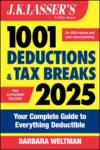What to Do if You Need Money from Your 401(k) Plan
Retirement plans are primarily designed to provide income during retirement years. However, in tough economic times, individuals short of cash to pay for housing, medical costs, and other necessities may turn to their retirement plans for money. There are two ways of tapping into a 401(k) plan prior to an event, such as retiring or being laid off, that would provide full access to the account: (1) a loan and (2) a hardship distribution.
Loans
Plans can (but are not required to) allow participants to borrow money from their accounts, up to certain limits fixed by the tax law. Loans usually can be taken for any reason, although some plans restrict loans to funds necessary to prevent eviction or buy a home, pay medical costs, or pay education costs. Special loan rules apply if funds are borrowed to buy a principal residence. In any case, the most you can borrow without immediate taxation is 50% of your vested account balance or $50,000, whichever is less. (Fidelity reported that at the end of the second quarter of 2010, the average 401(k) account balance was $61,800.)
Getting a loan. Obtaining cash in this manner is easy; just ask the plan administrator, and the loan usually is arranged within a few days. You may not even have to give a reason for borrowing this money (it depends on the plan). If you are married, you need your spouse’s consent to obtain the loan.
Loans must be payable in level payments over 5 years (longer if the loan is to buy a principal residence); payments are usually made through withholding from paychecks. There are no prepayment penalties, so you can pay off the loan at any time. Interest rates on plan loans may be lower than interest on commercial loans. Typically, plans set interest rates at the prime rate (currently 3.25%) plus 1%. The interest is paid to you (it is deposited in your account).
Plan loans are not reported to consumer credit bureaus and will not impact a borrower’s credit score.
Depending on the terms of the plan, participants may be barred from making additional elective deferrals until the loan (or a portion of it) has been repaid.
Taxation of the loan. The loan itself is not a taxable event; the loan is not taxed nor subject to a 10% early distribution penalty where the borrower is under age 591/2. Deductibility of interest paid on the loan depends on a couple of factors.
- Interest on loans to key employees (e.g., certain owners and officers). No deduction can be taken, regardless of what the funds are used for.
- Interest on loans to nonkey employees. If the loan is used to buy a principal residence or second home, interest is deductible as long as the loan is secured by the residence (i.e., the plan can foreclose on the home if the loan is not repaid). If the loan is used for investment purposes, interest is treated as investment interest, which is deductible to the extent of net investment income.
If you fail to repay the loan, however, it becomes taxable (and subject to the 10% penalty if applicable). This can occur, for example, if you leave the job before repaying the outstanding balance (usually you are given 60 to 90 days to repay a loan when you leave the job). It can also happen if you stop making installment payments on the loan; the distribution becomes taxable at the time payments cease.
Hardship Distributions
Fidelity reported recently that about 45% of participants in tax-deferred 401(k) programs took hardship distributions between mid-2008 and mid-2009. The main reasons cited for the distributions included prevention of a foreclosure or eviction, paying for college, or buying a primary residence.
Getting a hardship withdrawal. Plans generally must restrict distributions to retirement; they can allow distributions or rollovers when a participant leaves employment. However, plans will not lose their qualified status if they permit hardship withdrawals. Hardship withdrawals can only be made if the participant can show an immediate and heavy financial need. For example, if funds are available from other sources, this standard is not met.
Hardship withdrawals are restricted to a participant’s elective deferrals; they cannot include income earned on the deferrals or employer contributions on a participant’s behalf.
Participants seeking hardship withdrawals should ask the plan administrator about procedures for obtaining cash.
Taxation of the withdrawal. The withdrawal of funds from a 401(k) on account of hardship is a taxable distribution. In addition, if the participant is under age 591/2, the withdrawal is subject to a 10% early distribution penalty unless some exception to the penalty (e.g., disability or paying medical expenses) applies. Note: There is no penalty exception for withdrawals from a 401(k) used to pay for college or buy a principal residence.
Loan versus Hardship Distribution?
Which is a better way to obtain needed funds? It depends on your situation. Take these factors into account:
- The amount of funds you need. The amount that can be borrowed is limited; there is no cap on the amount of hardship withdrawals.
- Ability to repay. If you need the funds temporarily and can make monthly repayments, a loan will help maintain retirement savings; hardship withdrawals can never be repaid.
- Personal financial disclosure. A loan usually does not require the participant to disclose any personal information; a hardship withdrawal can require substantial disclosure and paperwork to back it up.
Income in respect of a decedent
Income earned by a person before death but taxable to an estate or heir who receives it.



